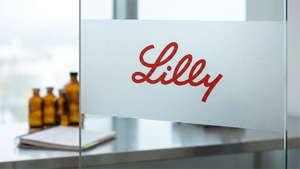
Earnings season has kicked off, and as usual, the banking and finance sector pushes the envelope first to show investors where the next market trend might be headed. Considering that financial services and markets make up a large portion of the United States economy, investors need to be able to understand what banking earnings mean.
When it comes to the sector, there are two main types of banks: investment banks and commercial banks. The former deals more with corporate finance, departments like sales and trading or investment banking, to show investors where the business cycle might be headed. The latter deals with consumer finance, products like mortgages and credit cards, to show markets where the consumer cycle is today and where it might go tomorrow.
Today, Bank of America Co. (NYSE: BAC) reports its latest earnings results, giving everyone an inside look at the current trends in the consumer sector and even some of the capital shifts between bonds and stocks and other asset classes like commodities. Here’s the beginning of where to look into Bank of America’s earnings results and where investors can begin to form their views.
Consumer Weakness in This Market Cycle Hurts Key Stocks
It is no coincidence that key consumer discretionary stocks like Nike Inc. (NYSE: NKE) trade at a low of 72% of their 52-week high prices or that names like Lululemon Athletica Inc. (NASDAQ: LULU) trade down to as little as 54% of their 52-week high.
Bank of America’s earnings help explain some of the bearish price action in these stocks. According to the bank’s quarterly earnings press release, the provision for credit losses (a measure to protect against credit defaults) is on the rise to reflect a bearish expectation regarding consumer credit trends.
These provisions rose to a high of $1.5 billion today, a significant increase of 25% from the $1.2 billion level recorded last year. Even over the quarter, these credit loss provisions rose by $34 million to show worsening trends on a more current basis. There is one more metric to look at as a comparison for investors to truly understand what is happening at the heart of the consumer economy.
Total nonperforming loans were up to $5.6 billion today, an increase of $0.2 billion over the quarter. Management is preparing another $1.5 billion for further losses, which represent up to 26.7% of the net nonperforming loans today. This shows investors just how much worse management thinks things could get in the near future.
Lastly, net charge-offs and delinquencies are another metric to measure consumer trends. Net charge-offs today stand at $1 billion, significantly above last year’s $804 million charge-offs, jumping by 25%. When it comes to delinquencies, 30-day delinquencies were up to $4.4 billion, up from $3.9 billion last year.
Then, 90-day delinquencies rose to $1.5 billion, which is up from $1.2 billion last year, meaning investors have more reason to believe these recent additions to further loss provisions might be an absolute necessity after all. These delinquencies and charge-offs are mainly driven by credit cards, but it doesn’t end there.
Slowing Mortgage Business Puts Bond Holdings at Risk
It looks like the residential mortgage side of the bank is experiencing further slowdowns. Today’s net originations were $5.3 billion compared to $5.6 billion a year ago, reiterating the slowing state of the real estate sector, which is also seen in slowing building permits and housing starts reports today.
This slowing demand for mortgage loans is an extension of the weakness of the bond markets as well. Considering that the iShares 20+ Year Treasury Bond ETF (NASDAQ: TLT) has sold off by nearly 10% this month, and the ten-year bond yield broke above 4% again, investors can see the weakening state of fixed-income markets today.
Falling bond prices could severely hurt Bank of America’s balance sheet, which recorded up to $893 billion worth of debt securities (bonds). Considering that Bank of America’s market capitalization is $330 billion, the potential losses the bank could take from its bond holdings are starting to create some bearish sentiment in the stock today.
Mainly, Warren Buffett decided to sell most of his stake in the bank, a decision potentially driven by the number of losses that could come from such a massive bond holding today, especially as prices begin to fall and hurt the bank’s book value. More than that, Wall Street analysts now see a consensus price target of only $42.3 a share today, calling for up to 1.5% downside from where the stock trades today.
This means that investors should stay away from consumer discretionary stocks and maybe consider finding a bottoming in the bond market, as falling prices add pressure to the bank’s balance sheet.




